Sat, 14 Mar 2015 . Last updated Mon, 01 Jun 2015 14:23

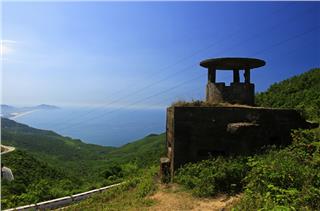
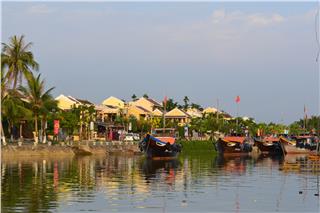
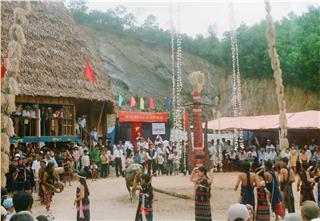

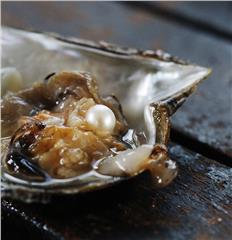

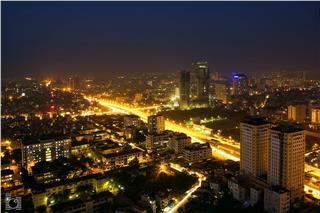

The idea of establishing the Vietnam Museum of Ethnology under the Vietnamese Academy of Social Sciences was generate in the early 1980s. Ethnographers of this academy at that time believed that there should be a museum to introduce the culture of 54 ethnic groups to international friends and young generations as well. As a result, the Government approved the decision to build the museum in 1995 and it was inaugurated and put into operation 2 years later.
Among more than 120 museums across Vietnam, the Vietnam Museum of Ethnology has its own style and its own display criteria. “Trong Dong” (bronze drum), a two-storey house, is the frequent exhibition space of 54 ethnic groups of Vietnam. It’s divided into two spaces for temporary exhibitions of different themes. Such a huge number of objects don’t create a maze to visitors because they are displayed nicely in two categories, namely geographical and linguistic regions. A visitor will begin with the plain region, go to the mountainous region and then to the midlands. He goes from different groups arranged in the order of their language, i.e. from Vietnamese and Muong, through Tay, Thai, Dao, Tang Mien to Ede and Jarai in the Central Highlands.
Apart from objects, photos and documentary films that reflect all dimensions of tangible and intangible culture of ethnic groups can also be found here. Kinh people, also known as the Viet people, account for about 87% of Vietnam’s population but they mostly live in the delta, midland and coastal areas. Ancestors of Viet-Muong people formed the first state of at the beginning of the first millennium BC. They have always played an important role in uniting all ethnic groups to build and defend the nation. Right from the beginning of their journey at the first floor, visitors can see the space of northern Delta residents with their conical leaf hat making craft.
Images of hat makers, their hats and videos help visitors get a better insight into daily life of a craft village. One of the most massive and impressive objects at the museum is the bike with numerous bamboo fish traps. Hung Yen people live on making bamboo fish traps and they worked out the best way to carry the most traps on one bike. Images of such bikes of bamboo fish traps going along the village road are like cultural imprints that remind us of the tough time that people in the Northern Delta experienced in the past. This bike is one of the most beautiful objects in the museum. However, few people know that many people disapproved of it being placed there on the 1990s.
A number of cultural features and typical handicrafts are also displayed in glass boxes with different themes like water puppetry, musical instruments, Mother Goodness worship, children’s folk toys, “boi” singing, bronze casting, wood carving, Dong Ho painting craft and so on. Mother Goddess worship, the folk cult of most Vietnamese people, is introduced with an altar and “len dong” (trance) ceremony and notes that helps visitors get a better insight into it. These objects aren’t antique or expensive but they are arranged in a really nice way.
Let’s continue our journey to the mountainous area with Tay, Thai, Dao and tang Mien people. Here, visitors can see lively objects and special features of Vietnamese ethnic minorities shown in Northwestern people’s market day, Thai people’s brocade weaving craft, Tay people’s “lau then” and Dao Do people’s maturity ceremony. Maturity ceremony is a special ceremony that has been handed down over generations of Dao Do people in Nam Lanh commune, Van Chan district, Yen Bai province. Dao Do people believe that maturity ceremony is an indispensable ceremony for males. It recognizes the maturity of young man and gives him the right to carry out ritual ceremonies and communicate with the decreased.
In the space of Central Highlands culture, visitors are amazed at the beauty of the long house, the communal house and the grave house. Long houses are typical structures of people living in the Central Highlands of Vietnam that show their matriarchy. A communal house is where the elderly tell children and grandchildren about their traditions and inspire their pride of the ancestors. Thanks to video clips about the buffalo stabbing festival and elephant hunting, visitors have strong affection for the majestic land of sunlight and wind.
This is the first time that Linda and his two uncles have visited Hanoi. And Vietnam Museum of Ethnology is their first destination. The “neu” tree and the typical decoration of Co people’s harvesting festival at the entrance leave a strong impression on her. And they understand the messages of objects they see in their journey. The architecture and design of the display house make the objects look livelier. Ha Duc Linh, an architect of Tay ethnic group designed it in the shape of a bronze drum while objects displayed in the house resemble patterns on the drum. Moreover, the staircase at the lobby that looks like the ladder to a stilt house makes the display house so special but familiar to visitors.
While the indoor exhibition space brings visitors a sense of familiarity, the outdoor space gives them the breath of the nature, the earth and the sky with 10 folk architectures such as a communal house of the Bahnar people, a long house of Ede people, a stilt house of the Tay people and a semi-stilt house of Dao people. The houses were acquired in the field trips of culture experts of the museum. They collect houses of different families across the country, brought them here and restored them to their original shape. Go around the large exhibition space and you’ll find it easy to realize colorful culture of different regions.
Lovely stilt houses of Tay and Thai people, green corn field of Hmong people, or the communal house that symbolizes the talent and strength of the community and especially, of men in the Central Highlands. The museum bought these houses from their owners. Their stories help us see life in a certain historical period. According to the museum records, this house used to belong to a family in Thanh Hoa province and it was built in 1905. During the land reform, this house was divided to many people who later sold it to the museum because they wanted to build their own houses. This history of this house is linked with the ups and downs of the society over the past century.
This house, which also served worshipping and was connected with a classroom, is longer than other houses. Carving patterns on the beams have existed for more than 100 years. The main house, the backhouse and the kitchen make up a “U” shape that surrounds a yard. This is the typical house of Kinh people in rural area. That’s why it was selected to be on display here. In front of the house is where water puppetry performances take place every Sunday.
Covering an area of over 4 hectares, Vietnam Museum of Ethnology has formed its own identity. It’s like a vivid picture of the diversity and richness of daily life of ethnic groups in Vietnam. And this picture also carries a message: wherever Vietnamese people live, they live in harmony and unity with each other in the shared house of Vietnam.
Source: VTC10 - NETVIET

 Đặt vé máy bay cho người Việt?
Bấm vào đây
Đặt vé máy bay cho người Việt?
Bấm vào đây
Our service uses cookies for technical, analytical and marketing purposes. See our Cookie và Privacy policies for more information. If you agree to this, just keep browsing.


